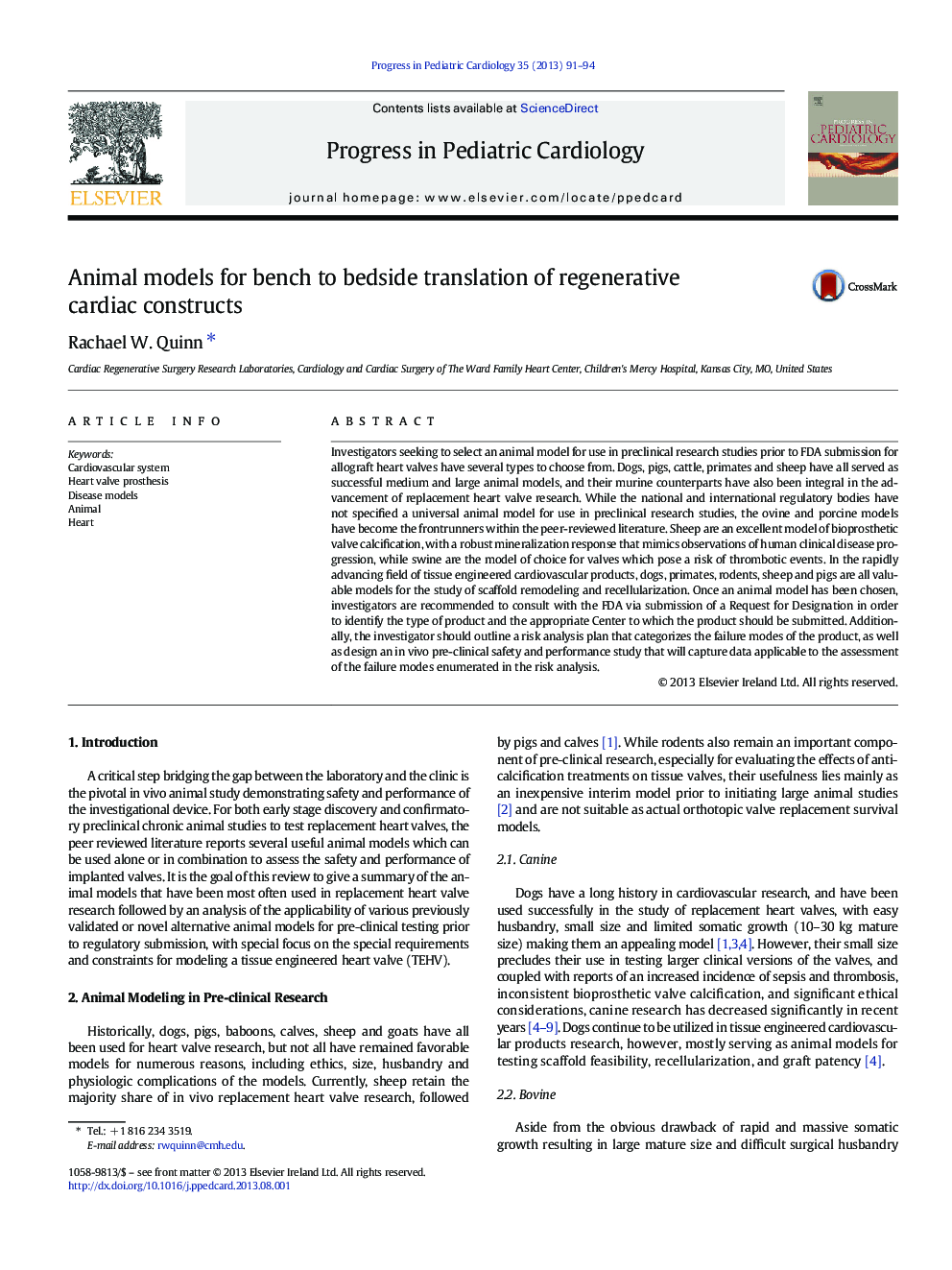| Article ID | Journal | Published Year | Pages | File Type |
|---|---|---|---|---|
| 3007288 | Progress in Pediatric Cardiology | 2013 | 4 Pages |
Investigators seeking to select an animal model for use in preclinical research studies prior to FDA submission for allograft heart valves have several types to choose from. Dogs, pigs, cattle, primates and sheep have all served as successful medium and large animal models, and their murine counterparts have also been integral in the advancement of replacement heart valve research. While the national and international regulatory bodies have not specified a universal animal model for use in preclinical research studies, the ovine and porcine models have become the frontrunners within the peer-reviewed literature. Sheep are an excellent model of bioprosthetic valve calcification, with a robust mineralization response that mimics observations of human clinical disease progression, while swine are the model of choice for valves which pose a risk of thrombotic events. In the rapidly advancing field of tissue engineered cardiovascular products, dogs, primates, rodents, sheep and pigs are all valuable models for the study of scaffold remodeling and recellularization. Once an animal model has been chosen, investigators are recommended to consult with the FDA via submission of a Request for Designation in order to identify the type of product and the appropriate Center to which the product should be submitted. Additionally, the investigator should outline a risk analysis plan that categorizes the failure modes of the product, as well as design an in vivo pre-clinical safety and performance study that will capture data applicable to the assessment of the failure modes enumerated in the risk analysis.
